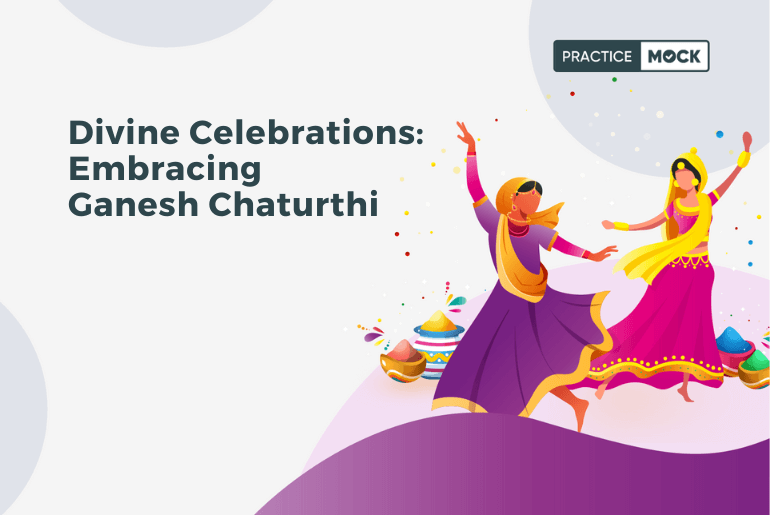Ganesh Chaturthi, a prominent Hindu festival, celebrates the birth of Lord Ganesha, the elephant-headed deity revered as the remover of obstacles and the god of wisdom and intellect. This grand festival is marked by elaborate rituals, colorful decorations, and fervent devotion in India and around the world.
Historical and Religious Significance
Ganesh Chaturthi has deep historical and religious roots. It is believed that Lord Ganesha was created by Goddess Parvati from her body oils and clay. He was assigned the task of guarding her chamber while she bathed. When Lord Shiva, Parvati’s husband, returned and was denied entry by Ganesha, a fierce battle ensued, resulting in the beheading of Ganesha. Overcome by grief, Parvati demanded her son’s resurrection, which led to Lord Ganesha being brought back to life with an elephant’s head. This event symbolizes the power of the divine and the importance of overcoming obstacles in life.
The Ten-Day Celebration
Ganesh Chaturthi is celebrated with immense enthusiasm and fervor. The festival typically lasts for ten days, beginning on the fourth day of the Hindu calendar month of Bhadrapada. It culminates on Anant Chaturdashi when the idol of Lord Ganesha is immersed in a body of water, symbolizing his return to his celestial abode.
Eco-Friendly Celebrations
In recent years, there has been a growing emphasis on eco-friendly celebrations of Ganesh Chaturthi. Traditional idols made of plaster of Paris (PoP) have given way to clay idols that are biodegradable. This shift is aimed at preserving the environment and reducing pollution in water bodies during the immersion process.
Elaborate Decorations and Poojas
Homes and public spaces are adorned with intricate decorations during Ganesh Chaturthi. Elaborate pandals (temporary temples) are erected, housing beautifully crafted idols of Lord Ganesha. Devotees offer prayers, light lamps, and perform daily poojas (rituals) to seek the blessings of the deity.
Modak, the Beloved Sweet
Modak, a sweet dumpling, holds special significance during Ganesh Chaturthi. It is considered Lord Ganesha’s favorite food, and people prepare and offer modak as a token of their devotion. These sweets are prepared in various flavors, with the most popular being coconut and jaggery-filled modak.
Processions and Cultural Performances
Ganesh Chaturthi also features grand processions known as “Ganesh Visarjan” during which idols are carried through the streets with much fanfare, accompanied by music and dance performances. These processions are a vibrant display of cultural heritage and religious fervor.
Symbol of Unity and Harmony
Ganesh Chaturthi transcends religious boundaries and is celebrated with joy and unity by people of all backgrounds. It serves as a symbol of communal harmony, bringing people together to rejoice in the divine blessings of Lord Ganesha.
Conclusion
Ganesh Chaturthi is a festival that encapsulates the rich cultural and spiritual heritage of India. It reflects the deep devotion of the people towards Lord Ganesha and their commitment to preserving the environment through eco-friendly celebrations. This grand festival serves as a reminder of the importance of unity, harmony, and overcoming obstacles in our journey through life.
- Sign Up on Practicemock for Updated Current Affairs, Free Topic Tests and Free Mini Mocks
- Sign Up Here to Download Free Study Material
Free Mock Tests for the Upcoming Exams
- RRB PO 2024 Free Mock Test
- RRB Clerk 2024 Free Mock Test
- SSC MTS Free Mock Test
- SSC CHSL Free Mock Test
- SSC CGL Free Mock Test
- GATE Mechanical Free Mock Test
- GATE Civil Free Mock Test
- NABARD Gr. A Free Mock Test
- SBI Clerk Mains Free Mock Test
- SSC CPO Free Mock Test
- AFCAT Free Mock Test
- CAT Free Mock Test
- NIACL Assistant Free Mock Test
- UIIC AO Free Mock Test
- UIIC Assistant Free Mock Test
- GIC Assistant Manager Free Mock Test
- NICL AO Free Mock Test
- Free SSC Live Test
- UPSC CSAT Free Mock Test
- CDS-I Free Mock Test
- RRB ALP Free Mock Test


